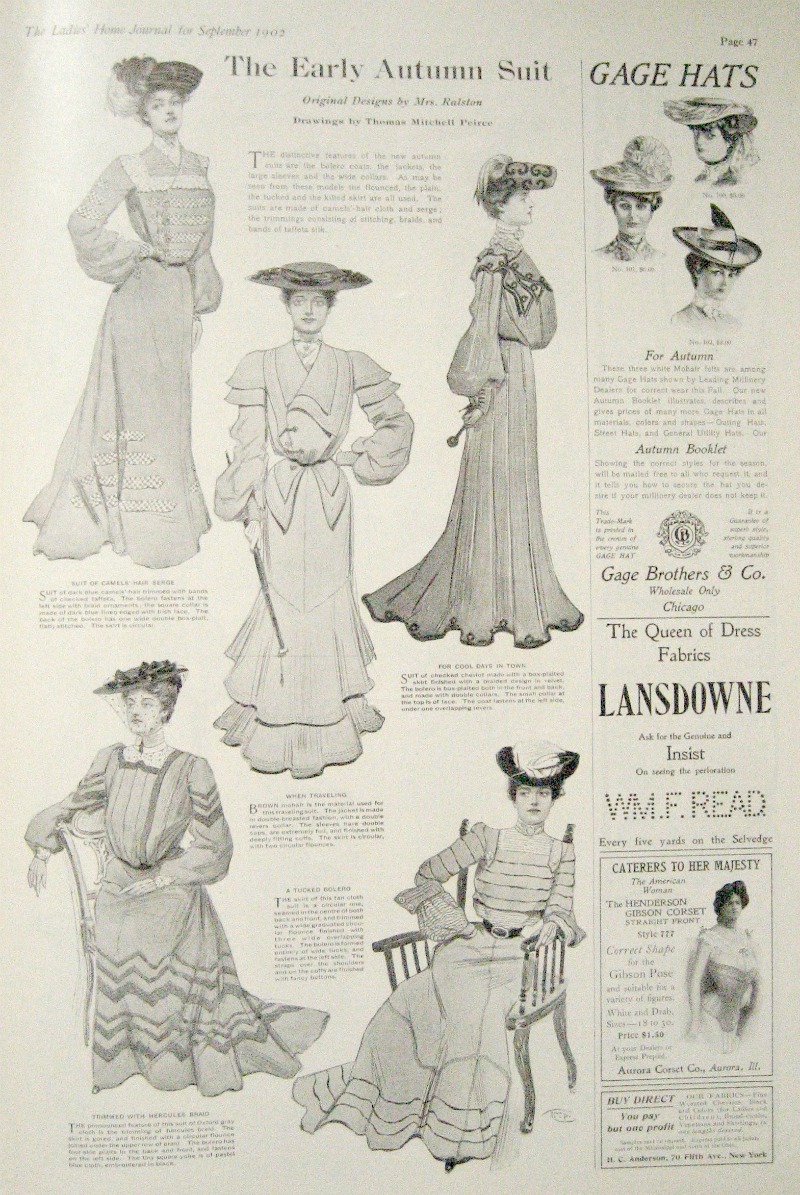When you’re duplicating a historical garment, how do you find the perfect fabric from today’s available textiles? When do you deviate from the dream in your head to what is available on the market? How do you compromise with your costume vision and your budget? Read More...
Category: Fabrics & Trims
Trimming an Early Victorian Bonnet
Flipping through the stack of (digital) fashion plates, I was enthralled by so many ideas for how to decorate an Early Victorian Bonnet. I was doing trim research last summer to complete my poke bonnet for Costume College and fell in love even more with this lesser-known era. Taken from period publications, early photographs and surviving pieces, here Read More...
Lingerie Dress Fabrics & Colors
Ah.. the gorgeous, floating-on-a-cloud lingerie dress from the turn of the 20th Century. Made from batiste (a thin opaque cotton), soft organdy, voile, lawn (similar to batiste) or even a cotton/linen blend they are the dreamy dessert dresses. Read More...
1902 Early Autumn Suits
The Early Autumn Suit from September 1902 in The Ladies Home Journal. The distinctive features of the new autumn suits are the bolero coats, the jackets, the large sleeves and the wide collars. As may be seen from these models the flounced, the plain, the tucked and the kilted skirt are all used. The suits are made Read More...
Not Your Grandma’s Nightgown
Don’t think for a minute that Victorian undies are frumpy. I’m talking about late Victorian chemises here. They’re not some long, plain gown with no trim, a conservative cut and b-o-r-i-n-g. I hope your frillies make you feel confident. They should because that’s where your time travel begins – when you first throw that chemise Read More...
Mid-Victorian Sheer Dresses
In the 1860s women made one-piece dresses in sheer fabrics for warmer weather. In the north, the popular fabric was barège, a thin gauze fabric made from wool or a wool blended with silk or cotton. In the southern climates, sheer solid or printed cottons were fashionable. Read More...



